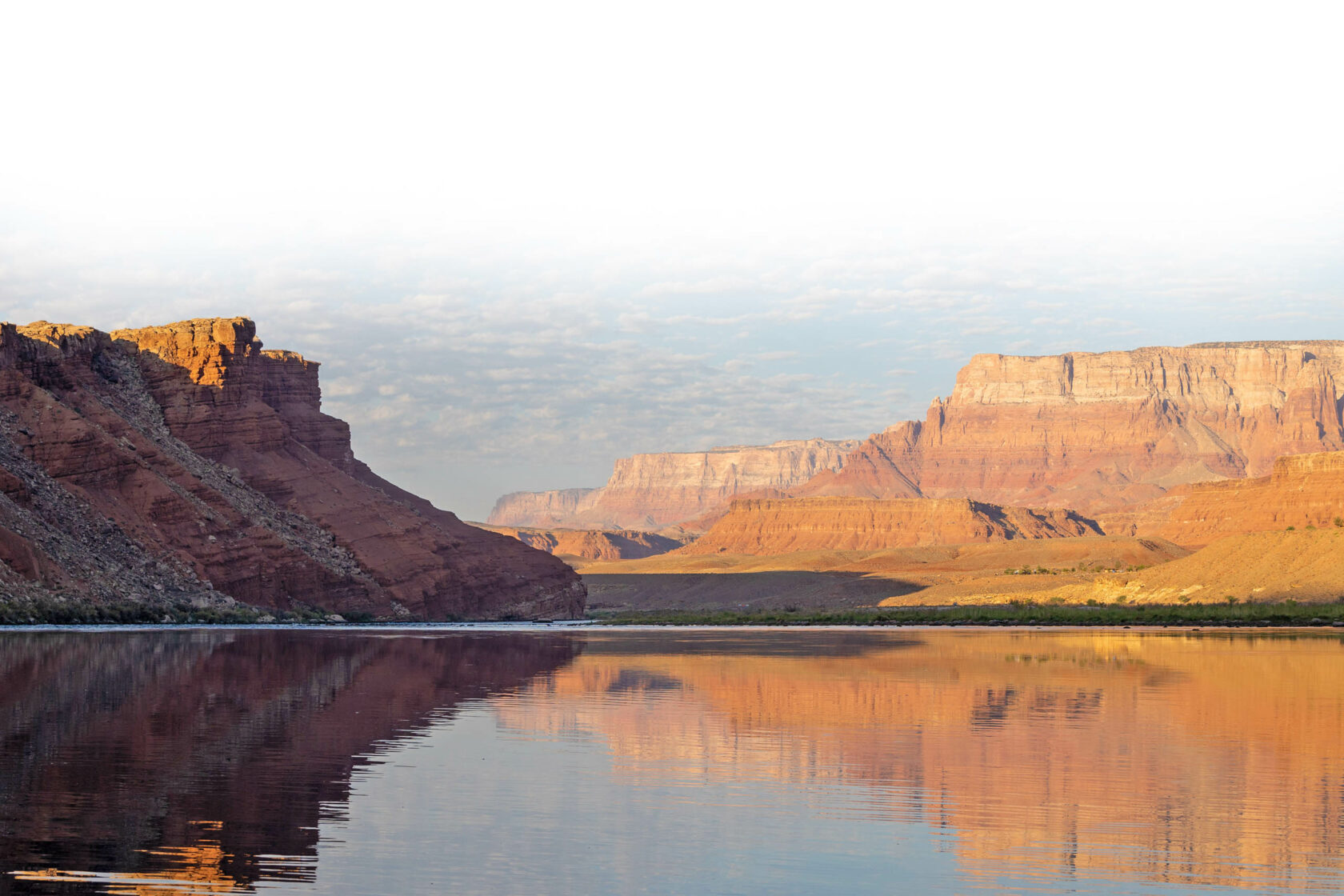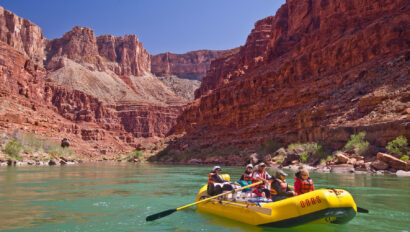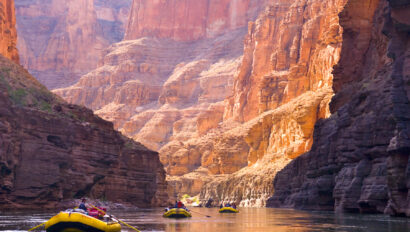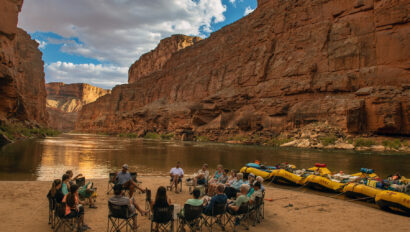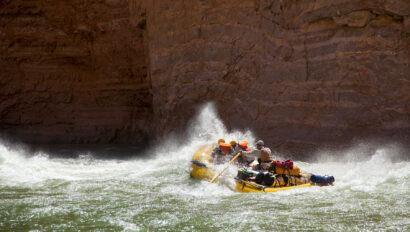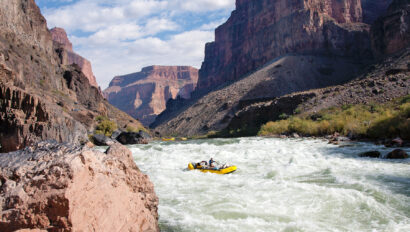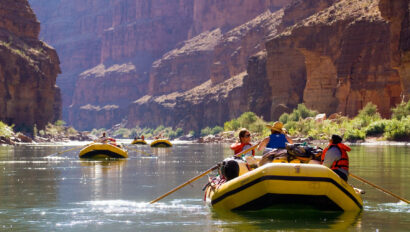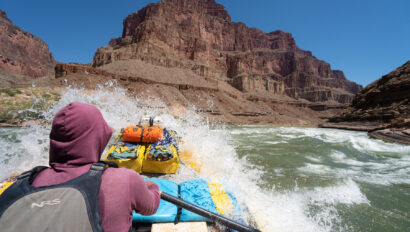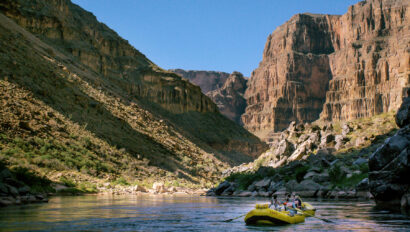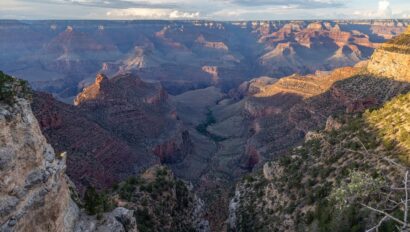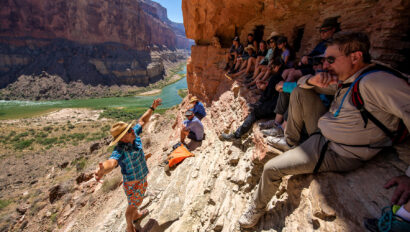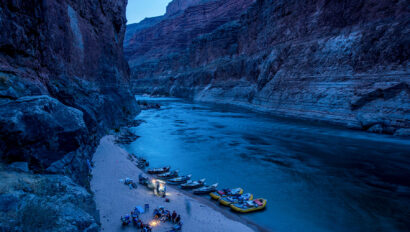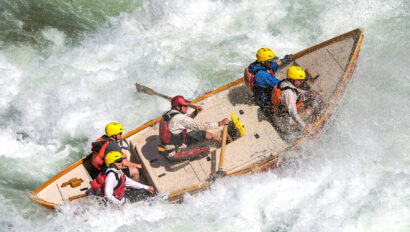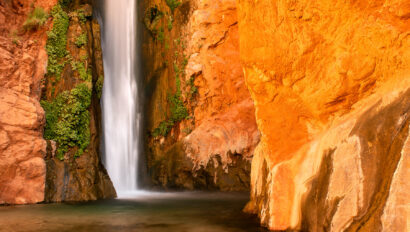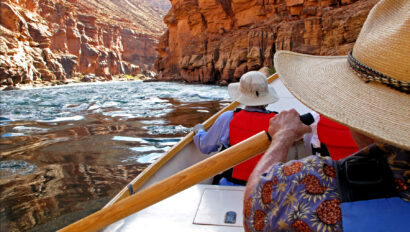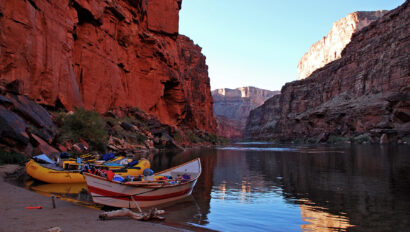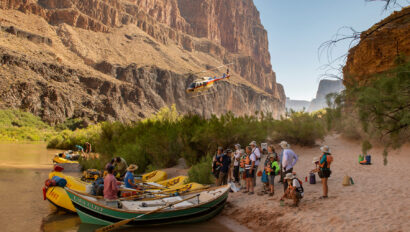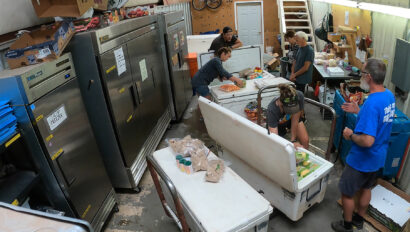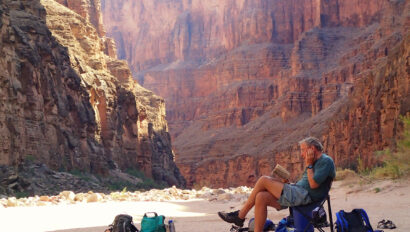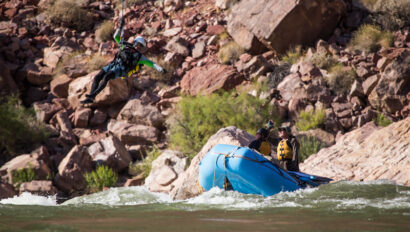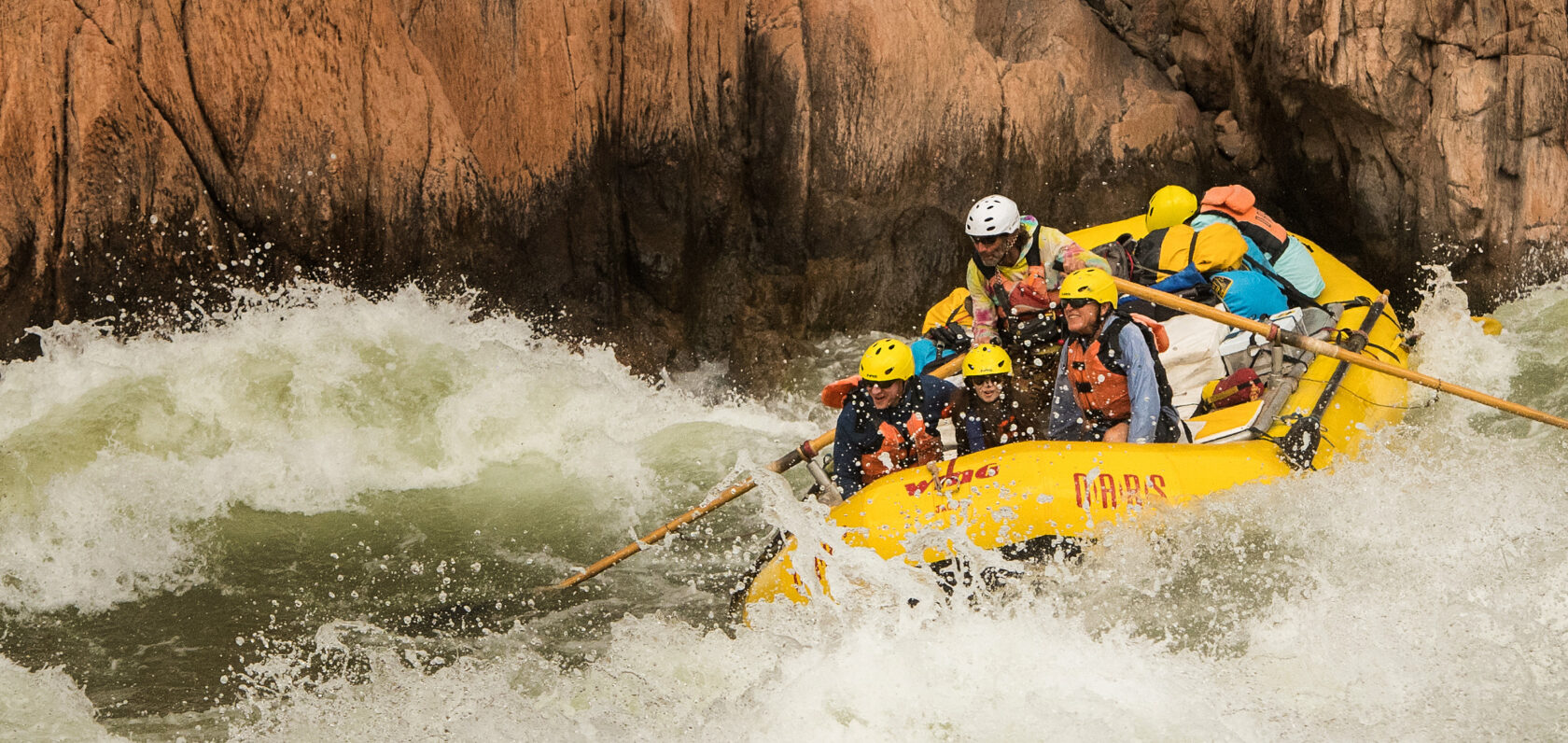
Grand Canyon Rafting & Dory Trips
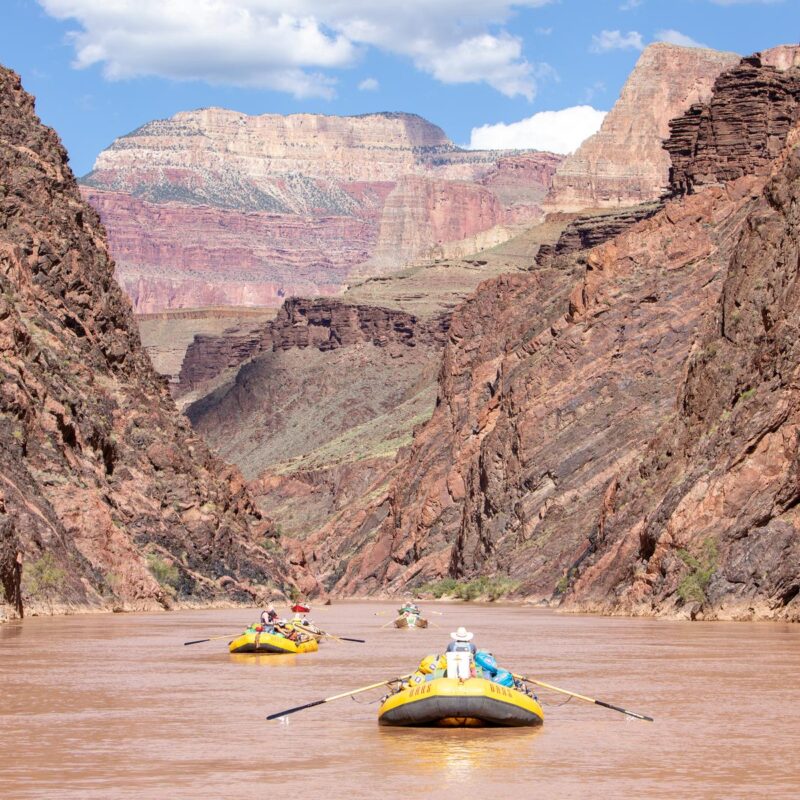
Discover Grand Canyon
Over the last fifty-plus years, OARS and Grand Canyon Dories have gained more experience conducting non-motorized rafting trips down the Colorado River than any other Grand Canyon rafting company. OARS Grand Canyon trips offer the option of long itineraries and a laid-back pace that allows time to soak up the unparalleled enormity of the Canyon’s character. Like the rest of our whitewater rafting and multi-sport trips, our guide-to-guest ratio is the best in the business. We limit our Grand Canyon river trips to consistently fewer passengers than any other outfitter so that you can experience the best possible, least crowded river adventure.
Trips fill up quickly each season. Sign up for our Grand Canyon priority mailing list to have the best shot at getting a spot on the trip you want.
O.A.R.S. Grand Canyon, Inc. is an authorized concessioner of Grand Canyon National Park
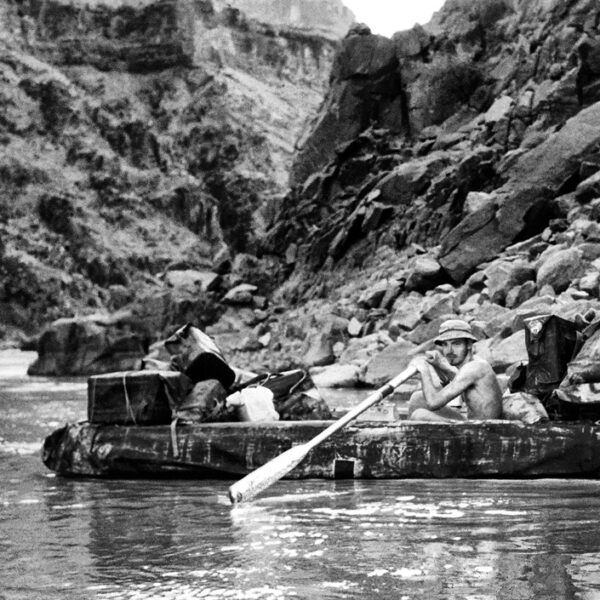
Why choose OARS?
OARS has been offering Colorado River rafting trips since 1969 and was selected as the first exclusively oar-powered rafting outfitter authorized to run trips on the Colorado River through Grand Canyon in 1972. Since then, OARS has earned a reputation for maintaining the gold standard for river trips.
Our family-owned and operated company is as passionate as ever about introducing people to our cherished rivers and wild places and showing our guests the best outdoor experience of their lives.
OARS employs the most experienced oar-powered guides in the Canyon, many of whom have been with the company for more than 30 years. Our full-time Grand Canyon rafting and dory guides are legends in their own time and know the Colorado River’s best-kept secrets. Their enthusiasm, knowledge, and years of experience are unmatched in the industry.
Find Your Perfect Trip
Rafting Adventures in Grand Canyon
Grand Canyon Rafting: Lees Ferry to Pipe Creek
Location:
Grand Canyon, Arizona
Adventure Level:
Challenging
Minimum Age:
12
Grand Canyon Rafting: Lees Ferry to Whitmore Wash
Location:
Grand Canyon, Arizona
Adventure Level:
Challenging
Minimum Age:
12
Grand Canyon Rafting: Lees Ferry to Diamond Creek
Location:
Grand Canyon, Arizona
Adventure Level:
Challenging
Minimum Age:
12
Grand Canyon Rafting: Lees Ferry to Pearce Ferry
Location:
Grand Canyon, Arizona
Adventure Level:
Challenging
Minimum Age:
12
Grand Canyon Rafting: Pipe Creek to Whitmore Wash
Location:
Grand Canyon, Arizona
Adventure Level:
Challenging
Minimum Age:
12
Grand Canyon Rafting: Pipe Creek to Diamond Creek
Location:
Grand Canyon, Arizona
Adventure Level:
Challenging
Minimum Age:
12
Grand Canyon Rafting: Pipe Creek to Pearce Ferry
Location:
Grand Canyon, Arizona
Adventure Level:
Challenging
Minimum Age:
12
Grand Canyon Rafting: Whitmore Wash to Pearce Ferry
Location:
Grand Canyon, Arizona
Adventure Level:
Moderate
Minimum Age:
7
Find Your Perfect Trip
DORY Adventures in Grand Canyon
Grand Canyon Dories: Lees Ferry to Pipe Creek
Location:
Grand Canyon, Arizona
Adventure Level:
Challenging
Minimum Age:
12
Grand Canyon Dories: Lees Ferry to Whitmore Wash
Location:
Grand Canyon, Arizona
Adventure Level:
Challenging
Minimum Age:
12
Grand Canyon Dories: Lees Ferry to Diamond Creek
Location:
Arizona
Adventure Level:
Challenging
Minimum Age:
12
Grand Canyon Dories: Lees Ferry to Pearce Ferry
Location:
Grand Canyon, Arizona
Adventure Level:
Challenging
Minimum Age:
12
Grand Canyon Dories: Pipe Creek to Whitmore Wash
Location:
Grand Canyon, Arizona
Adventure Level:
Challenging
Minimum Age:
12
Grand Canyon Dories: Pipe Creek to Diamond Creek
Location:
Grand Canyon, Arizona
Adventure Level:
Challenging
Minimum Age:
12
Grand Canyon Dories: Pipe Creek to Pearce Ferry
Location:
Grand Canyon, Arizona
Adventure Level:
Challenging
Minimum Age:
12
Grand Canyon Dories: Whitmore Wash to Pearce Ferry
Location:
Grand Canyon, Arizona
Adventure Level:
Moderate
Minimum Age:
7
Truly a trip of a lifetime. The OARS staff from sign up to the final goodbye were excellent with communication, professionalism and knowledge on the river. And fun! I learned so much about the Grand Canyon and the Colorado River. I ate the best meals and enjoyed many hikes. I met the best people! I’ve traveled all over the world and this is one of my favorite adventures.
Jamie Chatterly OARS Grand Canyon Guest
Map
Which trip is right for me?
When deciding on a Grand Canyon river trip, there are a few factors to consider: length of the trip, budget, type of boat (raft or dory), timing, and availability. For a full run-down of everything you might want to consider before booking, check out our guide to planning a Grand Canyon trip, which answers many of the most commonly asked questions.
What's the difference between a raft and dory trip?
Our Grand Canyon expeditions on the Colorado River use two different types of oar-powered boats: inflatable self-bailing rafts or hard-hulled dories. Both vessels hold four passengers plus a guide who pilots the boat with a long pair of oars.
Because rafts are inflatable, they ride on top of the water and have a certain amount of “give.” In big whitewater, they tend to flex a little and plow through the tops of waves. They are self-bailing boats, meaning all the water that splashes in drains out through holes between the inflatable floor and the side tubes.
The dories are sleek, double-ended boats made of fiberglass, wood, and foam. Being a hard-hulled boat, a dory has no “give.” When a large wave hits, it is lifted, providing a more pronounced, up-and-down ride through the rapids. As a passenger in a dory, you will assist in bailing the water out of the boat using a handheld bucket. You need to be agile enough to quickly shift your weight to the “high side” of the boat when called upon by the guide, to help keep the boat from tipping over.
How long are OARS Grand Canyon trips?
OARS trips through Grand Canyon range from 5 to 18 days. Full canyon trips from Lees Ferry to Diamond Creek or Pearce Ferry run 16-18 days, while partial trips are 5-14 days.
Each day varies, but on average, we spend 3-5 hours per day on the boats actually going downstream, with the rest of the time hiking and exploring points of interest, eating, or just relaxing in camp.
Are there rafting day trips in Grand Canyon?
OARS does not offer trips shorter than five days, but there are several companies that offer day trips in the upper and lower stretches of the canyon, outside of Grand Canyon National Park.
What is the minimum age for a Grand Canyon rafting trip?
The minimum age for OARS Grand Canyon rafting trips is 12 years old, except for the Whitmore Wash to Pearce Ferry trip, which is 7 years old.
When is the best time to go?
There is no “bad” time to be in Grand Canyon. Our early and late trips (April, September, and October) are longer, which allows for a more flexible schedule with possible layover days. The April trips usually catch the peak wildflower and cactus bloom. October is the “yellow” season with numerous yellow plants blooming and oblique lighting ideal for photography. The milder spring and fall temperatures create a comfortable environment for side canyon exploration. Also, in April and October, we are sometimes able to have a campfire in the evenings.
The summer months are the hottest and most crowded. Temperatures can soar to over 115 degrees in late June and July. July through September is historically known as the monsoon season, with occasional thunderstorms. During this time, these localized storms can turn the Colorado River muddy and create spectacular red and brown waterfalls.
Commercial rafting trips typically conclude for the season at the end of October/early-November and are not offered in the winter months.
What is the weather like in Grand Canyon?
The weather at the bottom of the canyon along the river is typically 20-30 degrees hotter than the temperature at the rim. It’s also important to keep in mind that temperatures and weather can fluctuate greatly throughout the day, regardless of the season.
Spring: April temperatures typically remain cool with average lows around 55°F and an average high of 82°F, but rafters should still be prepared for late winter storms. By May, the average temperatures are typically pleasant, ranging from 63-92°F, and weather patterns become more consistent. May is one of the most popular months to raft in Grand Canyon.
Summer: In early June the days are hot and nights are cool, but moving into July, it’s not uncommon for the temperature at river level to rise above 110-degrees. At the same time, temperatures can suddenly plummet and bring rain storms and even late summer monsoons, especially in August. Rafters should be prepared for extreme conditions.
Fall: Fall is a favored season for oar-powered Grand Canyon rafting trips since motorized traffic ends annually on September 15. Daytime temperatures are mild with cooler nights, especially as the months progress. However, the possibility of early season winter storms also increases, especially in October. During this window, the hiking conditions are also ideal and exploring the depths of the canyon can be a highlight of the trip.
Winter: Commercial outfitters don’t run during the winter months, November through March. The low angle of the sun means a lot of shade in the canyon and average nighttime temperatures can dip between the mid-30s to 40s. Snow at river level is also a possibility, especially in December and January.
Data based on 30 years of data collected at Phantom Ranch, courtesy of WeatherBase.com.
What are the Colorado River rapids and whitewater like?
The Colorado River through Grand Canyon has 47 major rapids. The whitewater varies in intensity from mild to wild. Rapids in Grand Canyon are rated in difficulty from 1 to 10—a “1” is flat water and a “10” is the most difficult rapid still considered runnable.
The water levels are regulated by releases from Glen Canyon Dam, and variability in those releases means the height of the river can fluctuate up and down several feet within the day. Because the flow is dam regulated, the water levels remain fairly consistent, even in a drought year, with the higher flows coinciding with summer temperatures and the resulting increase in demand for hydro-electricity. The temperature of the river has historically been 48°- 55° F, though it can trend warmer when upstream reservoir levels are lower.
The great thing about boating in the Grand Canyon is that no matter what the water level, there are going to be fun rapids. Some are better at higher flows, and others better at lower or more moderate flows. Well-known rapids like Hance, Hermit, Crystal, and Lava Falls, which offer excitement no matter the water level, are always fan-favorites.
Will I be able to explore the Canyon on my trip?
For many, the chance to explore remote areas of Grand Canyon National Park and its geological wonders is the biggest appeal of a river trip and there is no shortage of incredible hiking opportunities. Depending on which trip you choose, you may visit places like Elves Chasm, Blacktail Canyon, Deer Creek Falls, Nankoweap, Matkatamiba, and more. In general, longer trips tend to offer more time to explore trails and side canyons.
The easiest hikes are no more difficult than negotiating a few yards of beach sand or stepping over a few rocks. Others may go for several miles or more over a rough trail, climb up a hot hillside, require the use of both hands to ascend over cliff edges or boulders, and demand caution on narrow trails. On OARS trips, all side excursions are optional.
Will I have to hike in or out of Grand Canyon?
Guests who are joining or leaving a trip at Pipe Creek, which is about a mile past Phantom Ranch, are required to hike in or out of Grand Canyon on the Bright Angel Trail. The hike between the South Rim and the river is a serious, long (7.7 miles), and strenuous hike. It takes you in or out of one of the deepest canyons in the world with an elevation increase/decrease of more than 4,500 feet. Anyone considering a trip beginning or ending at Pipe Creek must engage in focused physical conditioning prior to departure. Hiking out of the canyon is a cardiovascular workout, whereas the hike into the canyon from the South Rim is very punishing on one’s joints, knees, and legs. They are both equally demanding but in different ways. For more information, please review our guide to hiking the Bright Angel Trail.
Can I do more than one trip in a year?
Grand Canyon National Park Service regulations prohibit individuals from participating in more than one recreational river trip (commercial or non-commercial) per year on the Lees Ferry to Diamond Creek section of the Colorado River. Because of this regulation, OARS and Grand Canyon Dories cannot accept a reservation from any individual who has or will participate in any other full or partial canyon commercial or non-commercial river trip within the same calendar year. If you have already completed or have plans to participate in any other Grand Canyon river trip during the same year you are traveling with us and would like to go again, please wait until the following year or later for your next trip. Grand Canyon National Park’s one-trip-per-year rule is strictly enforced by the National Park Service.
What can I expect on a multi-day river trip with OARS?
No two river rafting adventures are ever the same, but with OARS, you can count on a high standard of customer service, top-notch equipment, delicious meals, and some of the best guides in the industry providing you with a trip of a lifetime. Find out more about the OARS multi-day river trip experience, including what to expect on the river, camp life, food, and more.
This service is operated by O.A.R.S. Grand Canyon, Inc., a concessioner under contract with the U.S. Government and administered by the National Park Service. The concessioner is responsible for conducting these operations in a satisfactory manner. Prices are approved by the National Park Service.
PLEASE ADDRESS COMMENTS TO:
Superintendent Grand Canyon National Park PO Box 129 Grand Canyon, AZ 86023
Discover your next OARS Adventure
